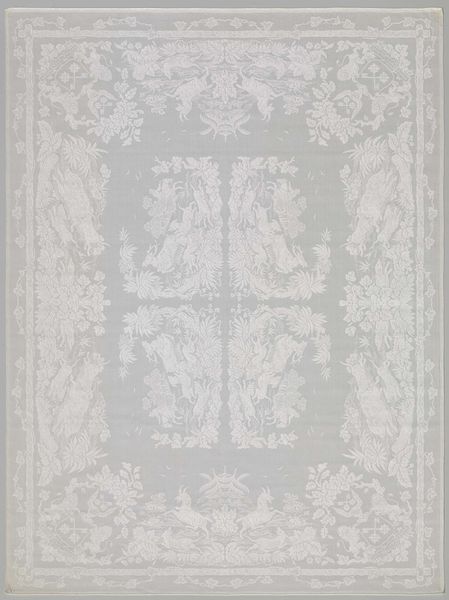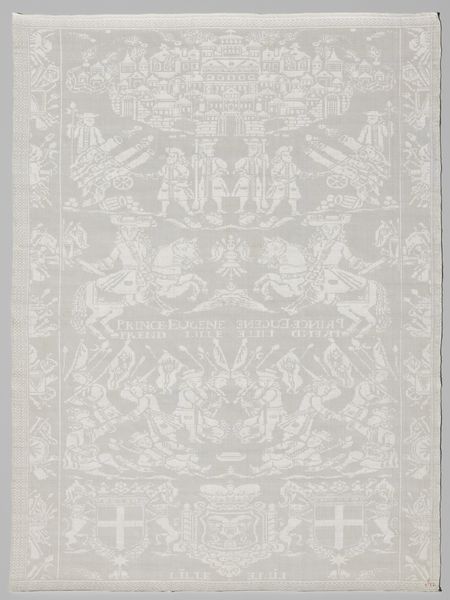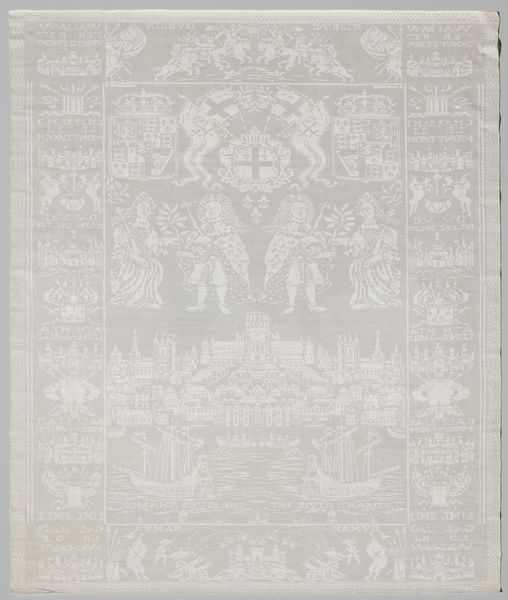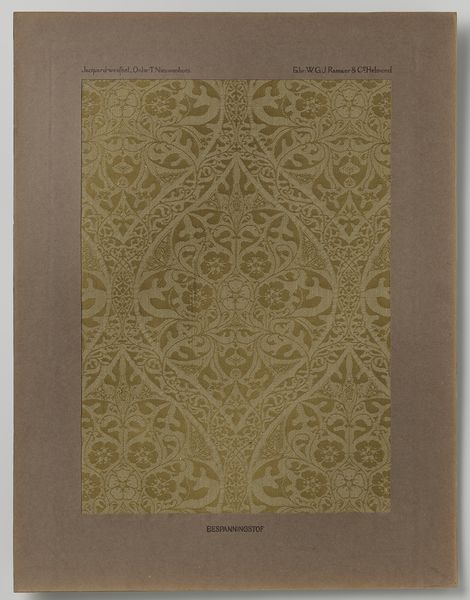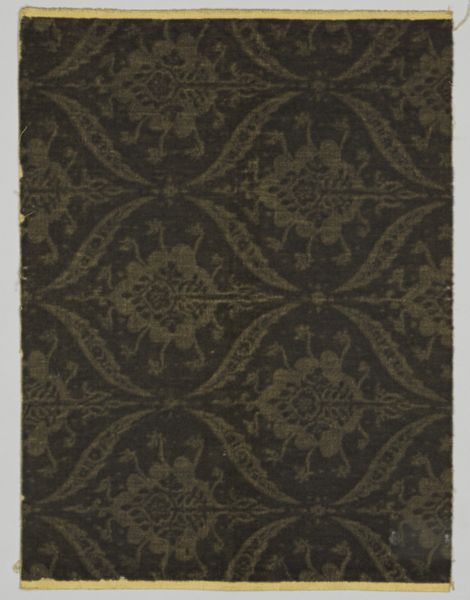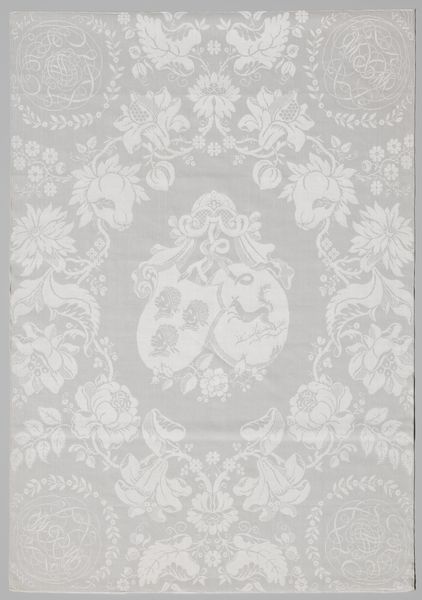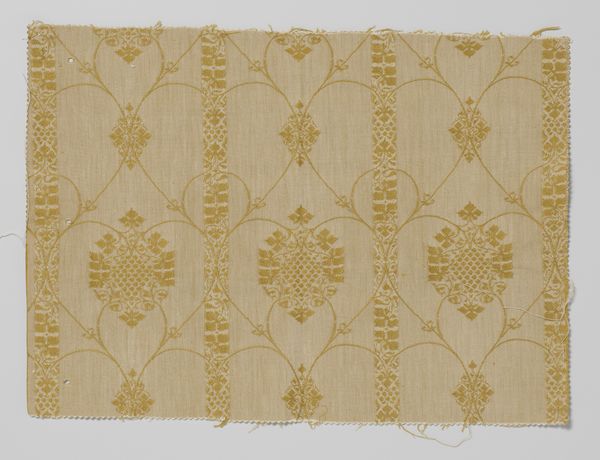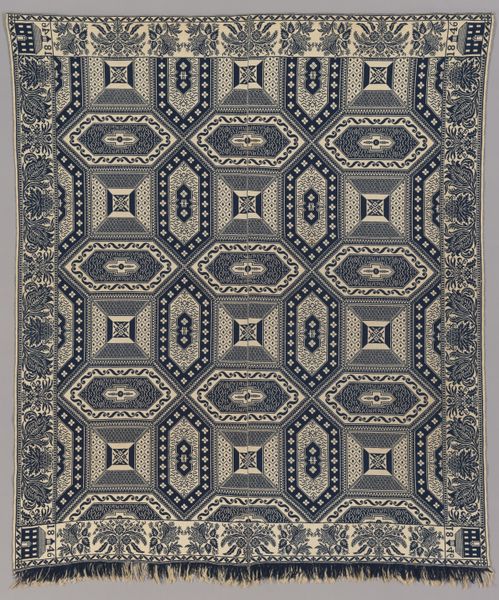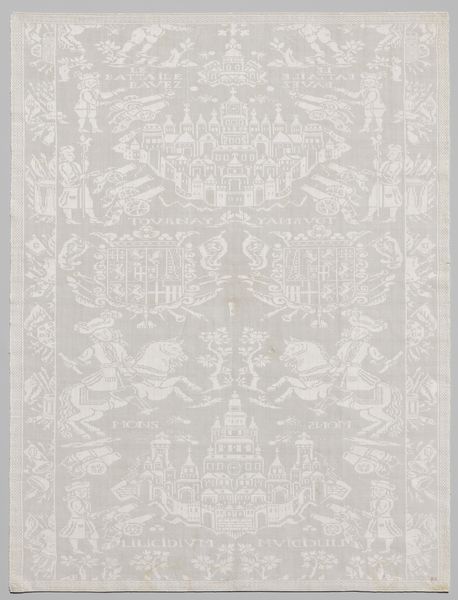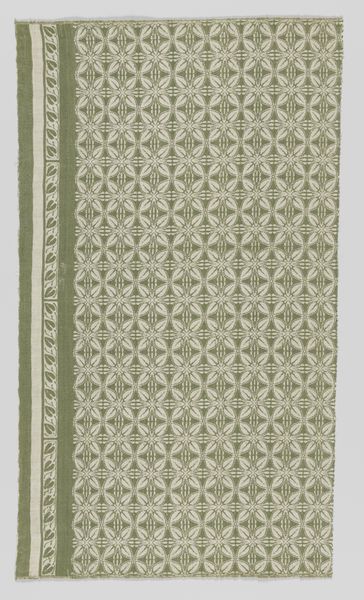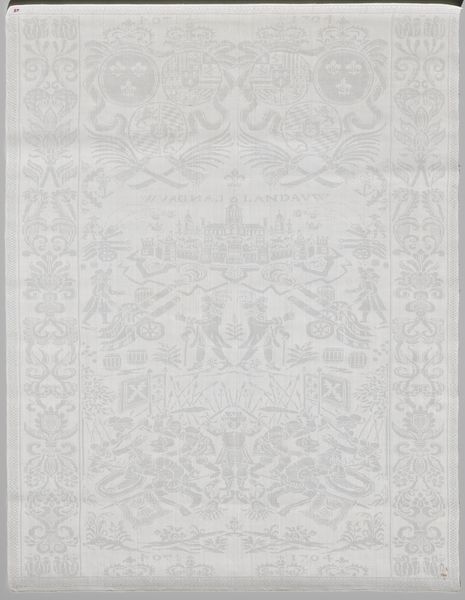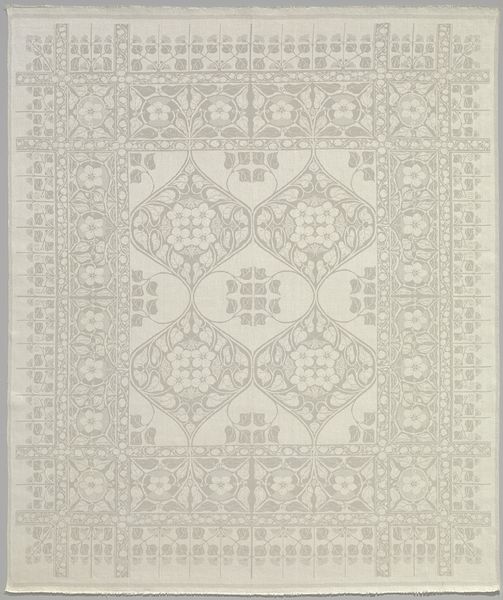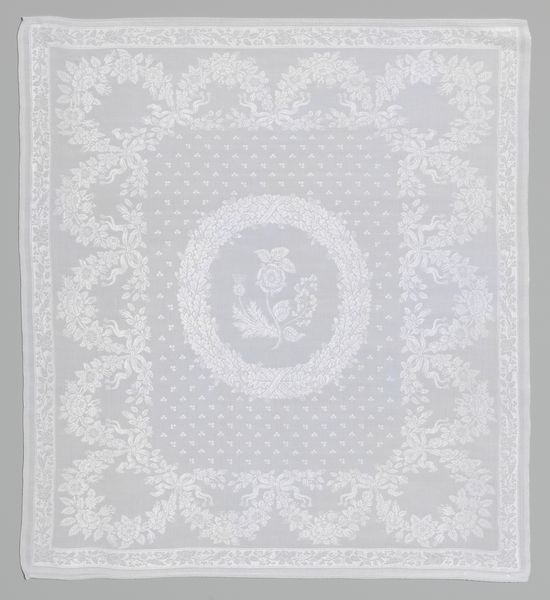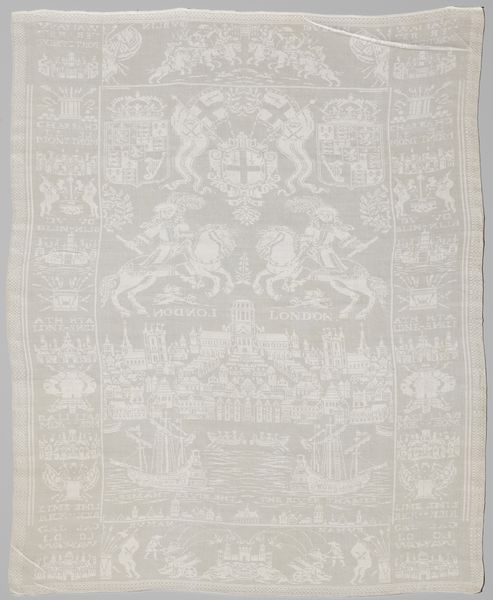
textile
#
textile
#
11_renaissance
#
pattern design
Dimensions: height 103 cm, width 72 cm, height 62.5 cm, width 29.5 cm
Copyright: Rijks Museum: Open Domain
This linen napkin, now in the Rijksmuseum, was made anonymously, and its date of origin is unknown. Its pattern has been tentatively identified as bearing English emblems. This linen damask bears witness to a complex web of skill, trade, and cultural exchange. To begin with, consider the material itself: linen, derived from the flax plant. Its inherent qualities of absorbency and smooth texture made it ideal for household use, while the labor-intensive process of growing flax, spinning it into thread, and weaving it into cloth gave linen a special value. The damask weave creates a subtle interplay of light and shadow. It elevates this humble material, associating it with refinement. And what about the pattern? The presence of possible English emblems suggests a story of international trade and influence, carried in the warp and weft of the cloth itself. So next time you reach for a simple cloth, consider the intricate story it has to tell.
Comments
No comments
Be the first to comment and join the conversation on the ultimate creative platform.
